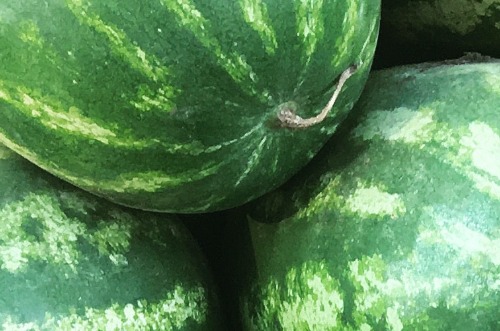
In W33 in the watermelon landscape, severe water scarcity and drought conditions across various regions of Spain have led to significant challenges for the production of domestic melons and watermelons, resulting in a scarcity of these fruits in the market and a subsequent price increase. The Coordinating Committee of Farmers and Ranchers Organizations (COAG) explained that the typical practice of staggered planting across different regions to ensure a continuous supply of watermelons has been disrupted due to the water shortage. In 2023, drought, high temperatures, and pest infestations severely impacted crop yields, leading to a scarcity of watermelons and melons in Andalusia, Murcia, and Ciudad Real.
Furthermore, the Agricultural Association of Young Farmers (Asaja) of Castilla-La Mancha, Spain, has raised concerns over the significant price drop for melons and watermelons experienced in W32. The first vice president of Asaja has emphasized that offered prices to farmers are falling below production costs, which are at least USD 0.38 per kilogram (kg) (EUR 0.35/kg) for melons and USD 0.33/kg (EUR 0.30/kg) for watermelons, a decrease of 40 to 50% within two weeks. This decline is attributed to increased supply due to delayed planting caused by late May rains and slowed consumption and exports due to unfavorable weather conditions. Castilla-La Mancha has cultivated around 5.8 thousand hectares (ha) of melon and 3.5 thousand ha of watermelon this season, predominantly in the province of Ciudad Real. The Ministry of Agriculture anticipates slightly higher production than the previous season, with approximately 200 thousand tons of watermelon and 155 thousand tons of melon.
Farmers in the Narail district of Bangladesh witnessed significant profits by cultivating off-season watermelons, thanks to local agricultural department officials’ introduction of high-yielding varieties. Although watermelons are typically grown from February to April, the Department of Agricultural Extension (DAE) introduced these varieties during the monsoon season. Approximately eight ha of land in the Kalia upazila were utilized for off-season watermelon cultivation, aiming to produce 15 metric tons (mt) of fruit per ha. Farmers received support from DAE officials, including fertilizers, seeds, and cash assistance, leading to successful cultivation in areas near fish enclosures and water bodies. Varieties like Asian-2, Tripti, and Black Baby were grown. Farmers reported investing USD 137.09 to 182.79/ha (BDT 15,000 to 20,000/ha), with revenue ranging from USD 1,370.93 to 1,827.91/ha (BDT 150,000 to 200,000/ha). With quick growth and good market prices, farmers anticipate substantial income gains within a short cultivation period.
Lastly, the Bykovskaya Melon Experimental Station in the Volgograd region of Russia plays a significant role in the production of watermelon, melon, and pumpkin seeds, accounting for over 50% of all seeds produced in the country. The region is a leader in gourd production, having harvested about 17 thousand tons of watermelons and melons by mid-August. The station has developed numerous melon hybrids, including the recently copyright-certified Timosha watermelon variety known for its taste quality and disease resistance. The station's achievements were highlighted during a recent event, showcasing new varieties like the white-fleshed watermelon and promoting their demand among producers and consumers.





